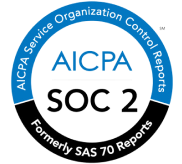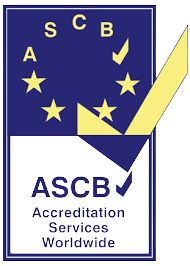Table of Content
Introduction
In reengineering business process, the role of Human Resources (HR) is crucial to ensure that the workforce is aligned with the organisation's new processes and goals.
The concept of Business Process Reengineering (BPR) involves radical redesign of business processes to achieve significant improvements in productivity, efficiency, and quality.
While much of the focus of BPR is on optimising workflows and systems, HR plays a pivotal role in ensuring that the human element is integrated effectively into this transformation.
Let’s study this changing role of HR in the post below with respect to BPR.

8 Crucial Roles of HR in Reengineering Business Process
- Workforce Alignment and Change Management
Facilitate Change:
HR helps manage the cultural and organisational change that comes with BPR. This includes preparing employees for changes in their roles, responsibilities, and workflows. They provide training, clear communication, and support to ensure that staff are equipped to handle new processes.
An HRMS like uKnowva HRMS with eLMS functionality helps in meeting most of the learning and development needs for an HR.
Employees get to subscribe to the latest courses, modules, and sessions. Reports are sent to the reporting managers to gauge the learning effectiveness and know if the change is ready to be facilitated at an organisational level.
Communicate Changes Effectively:
HR plays a key role informing and engaging employees while reengineering business process. They provide clarity on what is changing, why it is changing, and how it impacts individuals and teams.
Address Resistance:
BPR often faces resistance due to fear of the unknown, job displacement, or the complexity of new processes. HR helps address and mitigate this resistance through counseling, feedback loops, and providing reassurance to employees.
- Skills Assessment and Development
Identify Skill Gaps:
As new business processes are introduced, HR needs to assess whether the existing workforce has the necessary skills to perform the new tasks effectively. They identify skill gaps and create plans for upskilling or reskilling employees.
Training and Development:
HR is responsible for organising training programs to equip employees with the necessary skills, whether through workshops, online courses, or mentorship. This ensures that employees are prepared for their evolving roles.
- Redesigning Roles and Job Functions
Restructure Job Roles:
Reengineering business process leads to changes in job roles and responsibilities. HR plays a role in redefining job descriptions, clarifying new reporting structures, and ensuring that employees understand their revised roles within the new processes.
Job Redesign:
HR may need to work closely with leadership to redesign jobs in a way that aligns with the new streamlined processes. This might involve creating more cross-functional roles or shifting responsibilities to optimise the flow of work.
- Organisational Structure Alignment
Redefining Teams and Departments:
HR helps realign teams and departments to ensure that the organisation’s structure supports the new business processes. This may involve breaking down silos, creating new teams, or adjusting reporting lines to ensure efficiency.
Talent Allocation:
HR may need to move talent around within the organisation to place the right people in the right roles that will be more effective under the new processes.
- Performance Management
Adjusting KPIs and Metrics:
HR plays a role in updating performance management systems to reflect new business goals and processes.
This involves redefining key performance indicators (KPIs) that align with the redesigned processes and ensuring that employees' performance is measured appropriately.
Incentives and Rewards:
HR helps to design compensation and reward systems that are in line with the new goals and performance metrics. This ensures that employees remain motivated and engaged during the reengineering process.
- Employee Engagement and Morale
Maintaining Morale:
BPR can be stressful and may create uncertainty among employees. HR ensures that employees remain engaged and motivated, providing support through counseling, feedback mechanisms, and creating a sense of purpose around the changes.
Employee Involvement:
HR fosters a participative approach where employees can share feedback and suggestions about the new processes. Involving employees in the redesign process can enhance buy-in and make the transition smoother.
- Workforce Planning
Identifying Future Workforce Needs:
HR plays a key role in workforce planning by forecasting the talent needs of the organisation after BPR. This includes determining if the organisation requires new skills, additional workers, or if any roles will become redundant.
Managing Downsizing or Restructuring:
In cases where BPR leads to job eliminations or restructuring, HR is responsible for handling the process in a fair and legally compliant manner, including managing severance packages, redeployment, and outplacement services for affected employees.
- Legal and Ethical Compliance
Ensuring Compliance:
HR ensures that the process reengineering initiatives comply with labor laws, health and safety regulations, and other legal requirements.
They are also responsible for handling any potential disputes, grievances, or labor relations issues that arise during the process.
Conclusion
HR's role in reengineering business process is to support the organisation’s transformation by ensuring that the workforce is ready, capable, and motivated to embrace the new processes.
A key tool that can support HR in managing BPR effectively is an HR Management System (HRMS) like uKnowva HRMS.
This platform can streamline and automate various HR functions, such as performance management, employee engagement, skills tracking.
FAQs on Role of HR in Reengineering Business Process
-
How can HR help employees adapt to new business processes?
HR can help by providing clear communication about the changes, offering training programs to upskill employees, and facilitating support systems like coaching or mentoring. HR also manages resistance to change and ensures that employees understand the benefits of the new processes.
-
What role does HR play in workforce planning during BPR?
HR is responsible for assessing future talent needs, identifying skill gaps, and ensuring that the right employees are in the right roles to support the reengineered business processes. HR may also help with redeployment, recruitment, or downsizing if necessary.
-
How does HR ensure that the workforce has the necessary skills for new processes?
HR conducts a skills assessment to identify gaps and organises upskilling or reskilling initiatives. Training programs, workshops, and external certifications are often introduced to ensure employees are equipped with the required skills to thrive in the new environment.












